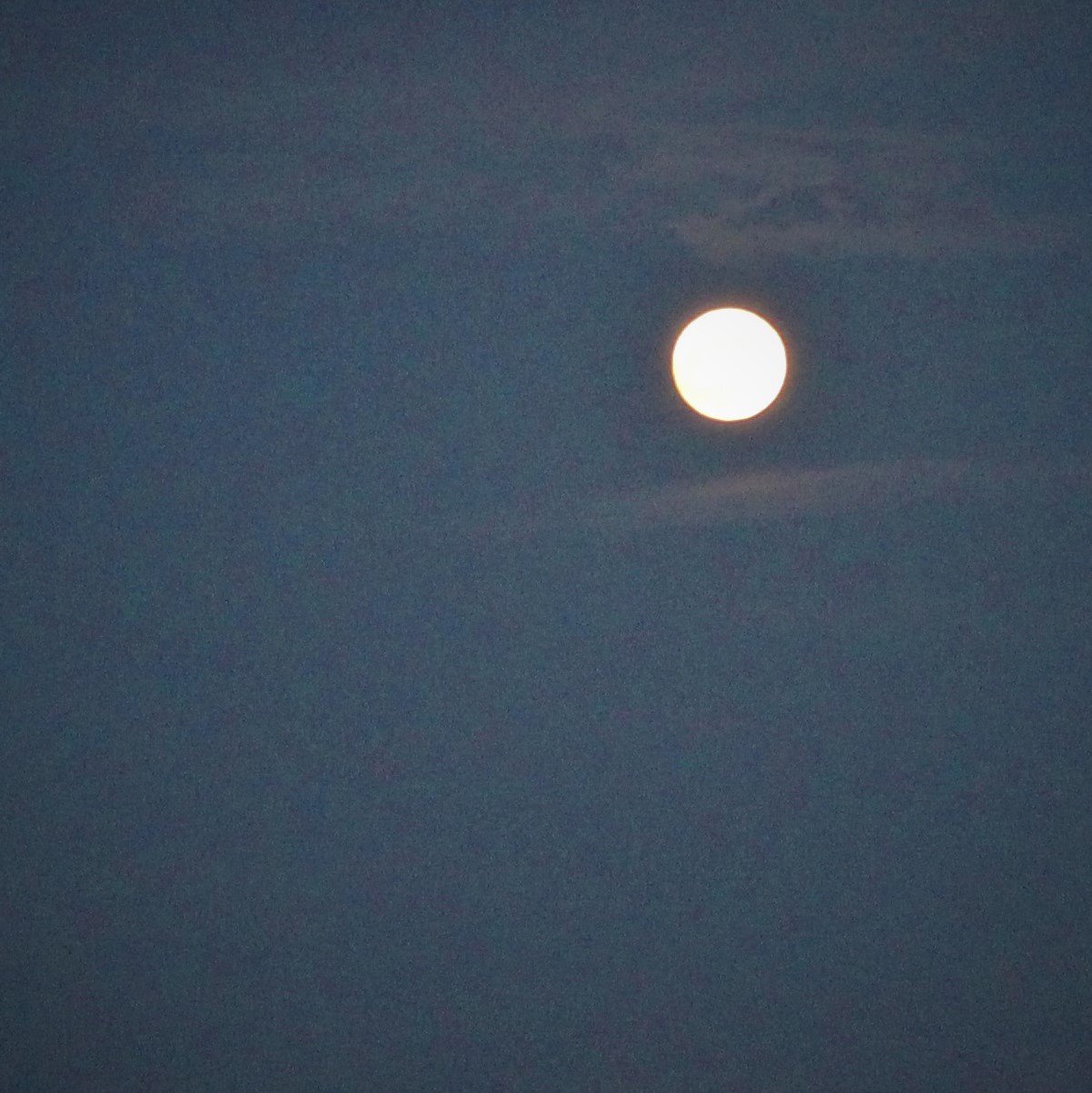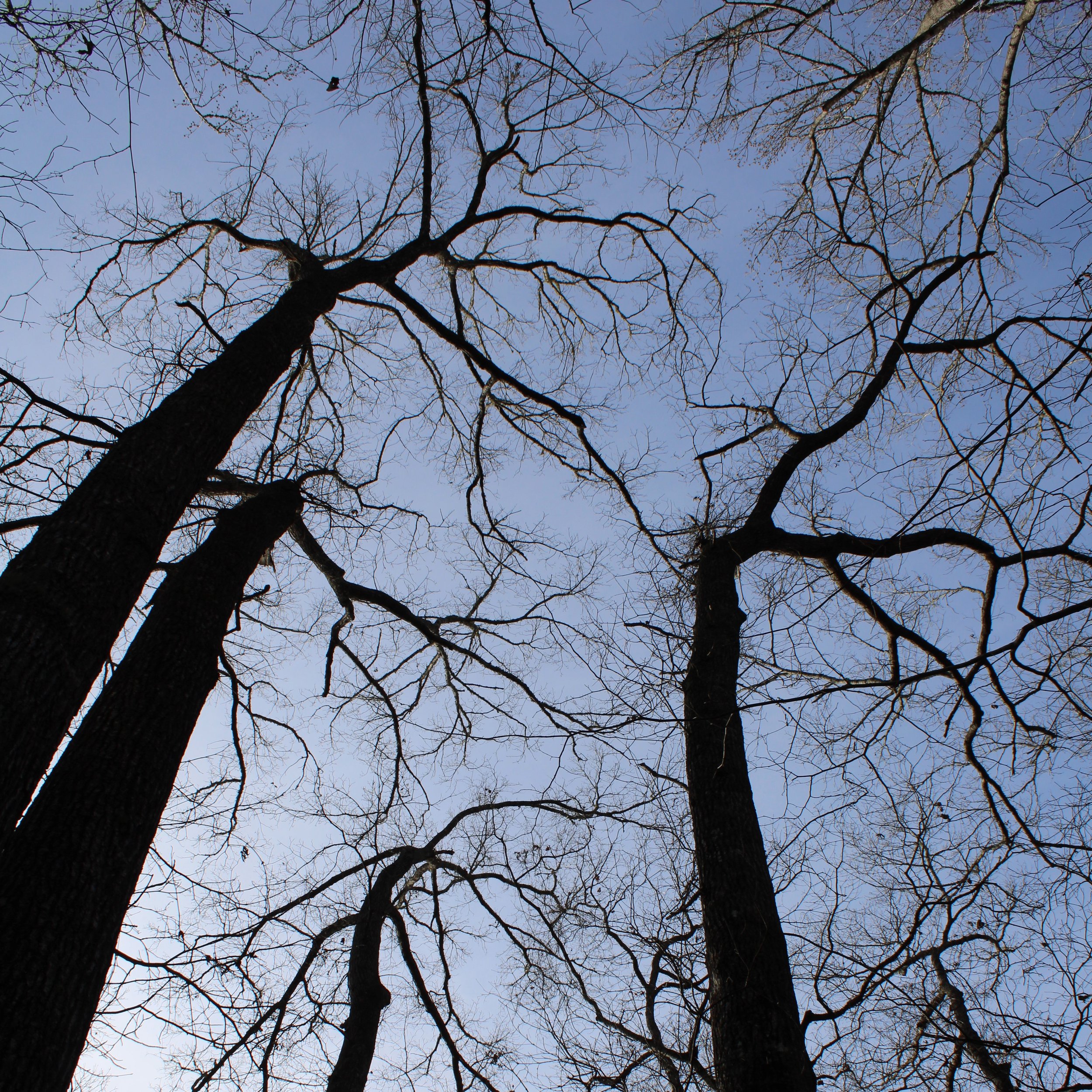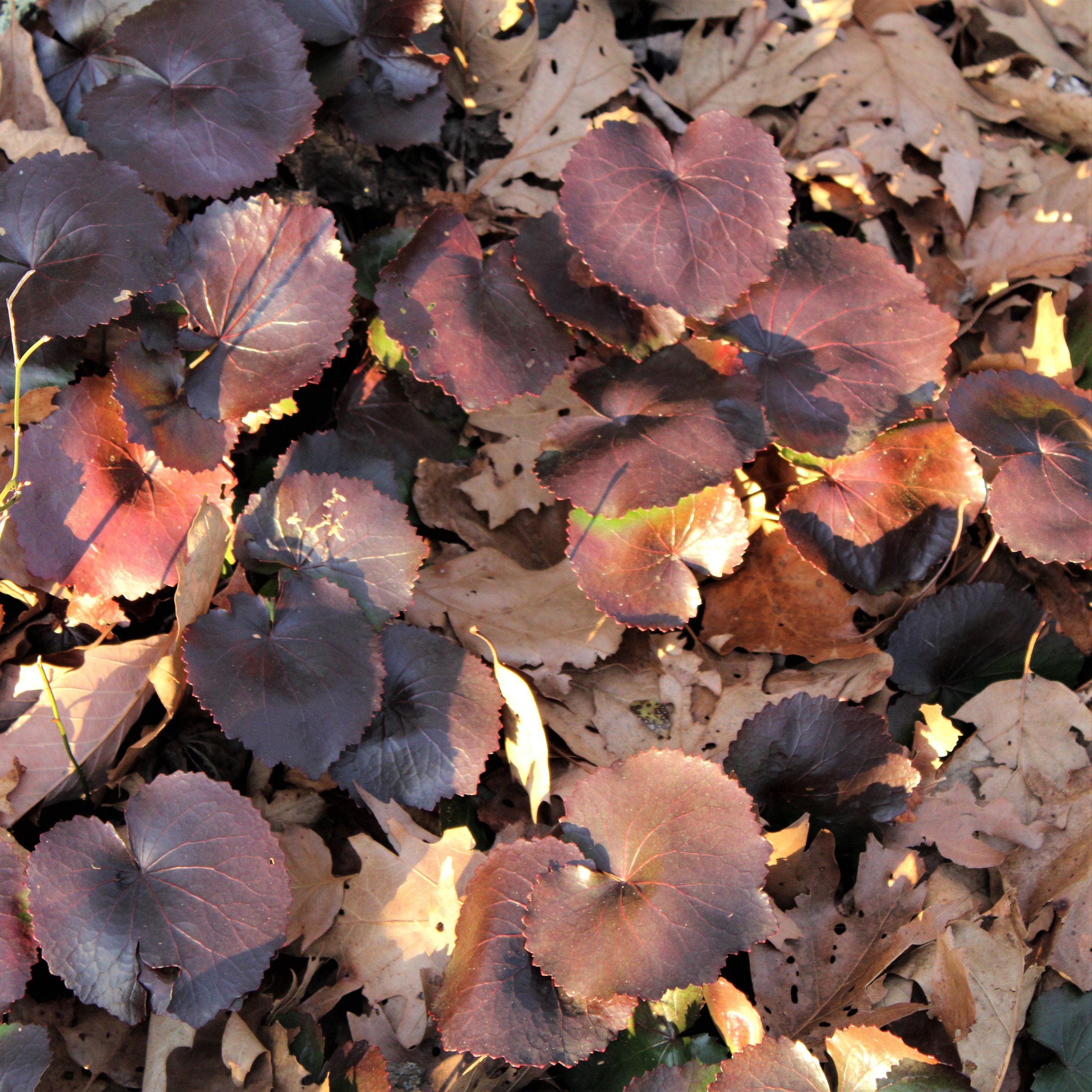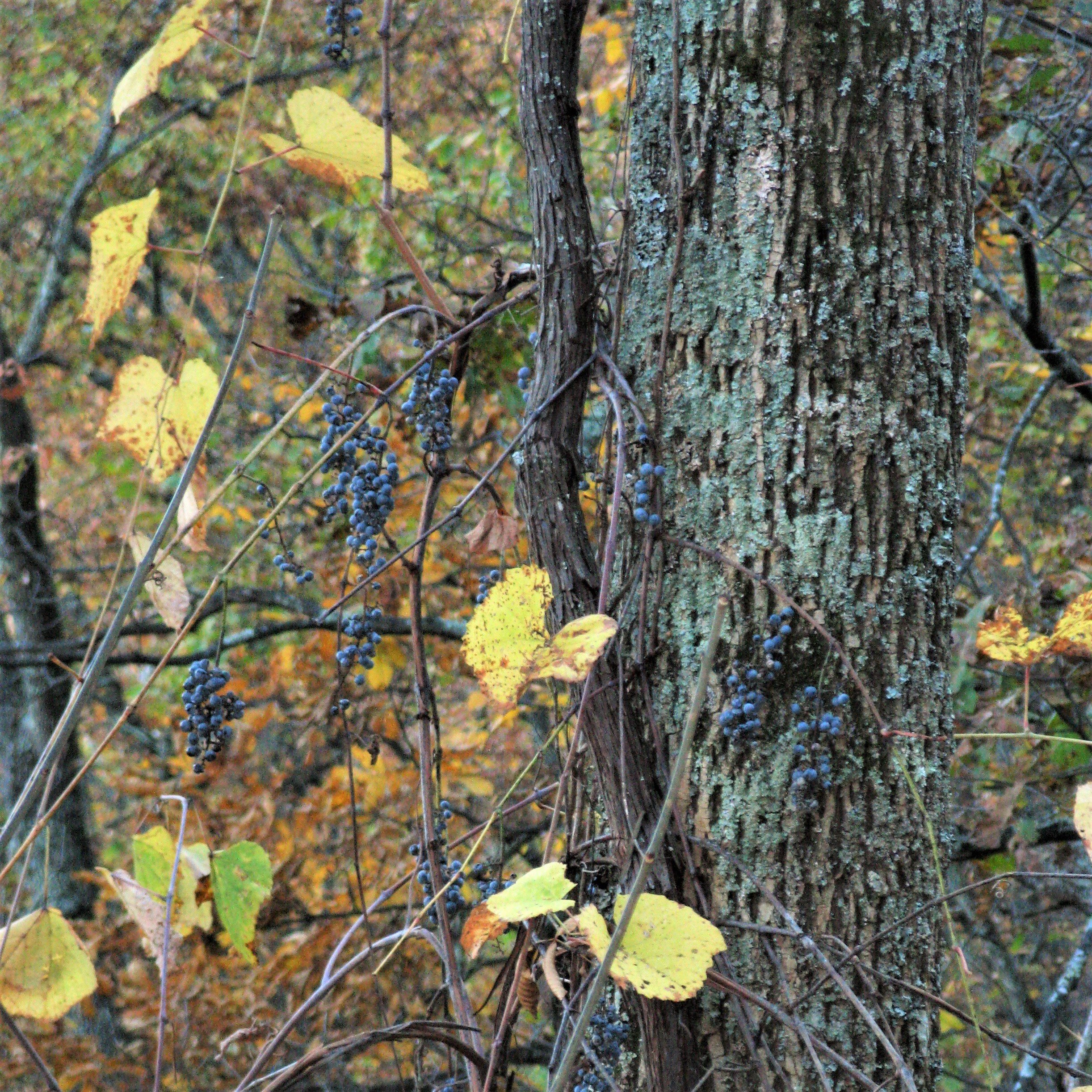November
There is a curiously persistent interest in the names old cultures gave to each month's moon. These poetic names seem colorful to us now, and often strange, because what they reference is no longer as well known or important to us. That in itself is worth considering, because the moons were typically named for a prominent natural phenomenon or activity that occurred around that particular time. For example, the most commonly-cited traditional name for November's moon cycle is the Beaver Moon, because this is the time when beavers finish preparations for winter and retreat to their lodges. Apparently the people who named it so had a vested interest in what beavers did.
There are other moon names from other cultures and they differ according to what the people who invented them took notice of in their environment. The Cherokee, the indigenous people whose territory once included Western North Carolina, referred to this month’s moon as the Trading Moon, because this time of year was favored for bartering between towns and tribes. In various different places November's full moon has been alternately known as the Frost Moon, Oak Moon, Mourning Moon, Turkey Moon, Dark Moon, Deer Rutting Moon, Digging Moon, Freezing Moon and Whitefish Moon. If people today still like the idea of giving poetic names to moon cycles, perhaps it is time to update them, so they make more sense for our culture. For us maybe November's could be called the Christmas Shopping Moon, although some people might argue that Christmas shopping should be mostly done by now.
Whether one is attuned to the turning of the calendar pages or the cycle of the seasons, November lets you know the end is near. October was a sight to behold! The final phase of that month's sublime show of colorful leaves plays on into the very beginning of this month, but the scene is rapidly shifting. Autumn, like spring, is a transitional season. It acts as a bridge between summer, the vibrant expression of life, and winter, the deep sleep of death. November occupies the middle ground of autumn’s span, and within it we find the very heart of that transition. In the landscape this month the old leaves of summer, having gone through their blazing transformation, lose their luster and fall off, revealing the nakedness of winter. The plants are following the weather’s lead. In October there are usually many bright days that radiate comfortable warmth, passing into pleasantly cool nights. But there are fewer and fewer such days and nights as November takes the stage. By the end of the month the warmth is usually gone, replaced by a creeping chill.
To our forebears this time of year was all about the imminence of winter, and the critical need to be ready for it. Food needed to be harvested, gathered and stored, as did fuel to keep the fires burning, and shelter had to be made secure. So much vital work needed to be done in preparation for the next six moons or so when cold and darkness settled down to stay. Our ancestors looked around at this time of year and observed their world in an active state of change. Woody plants that had recently been ablaze in beautiful colors were now dropping their leaves, with many of them already bare, even as herbaceous plants withered and then disappeared back into the earth. The animals of field and forest were busy foraging about, eating as much as possible to fatten themselves, laying in stores for the hungry time ahead and growing heavier winter coats for warmth. Birds were gathering in flocks and taking off for unknown destinations somewhere to the south. And our predecessors, so much more attuned to the natural world than we are today, were keenly aware of how the hours of daylight and the warmth of the sun were rapidly diminishing, growing noticeably shorter and weaker. Then as now, November brought the darkness and the cold, but back then people lived in close contact with the elements, and it was serious business. The end of the warm season was all about preparations for the cold season, and if you weren't prepared you might not be around to see another spring.
All of that November reality remains more or less the same in the natural world around us, but for most people today the paradigm is very different. We were the ones who changed everything. With our big human brains we figured out new solutions to the age-old challenges of winter, and with our grasping primate hands we rebuilt the world around us in an attempt to better provide for our own safety and comfort. We tend to think well of ourselves for all this clever ability, and why not? Other creatures would likely do the same for themselves, if they could. But there are a few nagging problems with this brave new world we've created. Take for example the means we have devised for keeping ourselves protected from the cold: One way or another, directly or indirectly, almost all of us stay warm in winter by burning fossil fuels. This makes the ready and reliable availability of fossil fuels vitally important, and think about all the geopolitical implications of that. Then consider the environmental impact of extracting and burning fossil fuels. By seeking out and consuming the remains of life that used to live on the planet (the source of all the oil, gas and coal), we are causing great harm to the life presently living on the planet, while altering the ability of the planet to sustain life in the future. We have effectively answered one problem that threatens our lives — freezing to death in winter — by harnessing technology and behaving in ways that create others — worldwide political instability and climate change. Out of the frying pan and into the fire, you might say. Well, at least we're warm!
The culture we live in now is not the same as the one lived in by the indigenous people who named the November moon in honor of beavers. The beavers are still out there, presumably at this time of year going about their customary beaverish business of shoring up lodges in which they will attempt to survive winter, but not so many people know or care about it any more. What the beavers are up to, or what the oaks, turkey and whitefish are doing, is no longer as interesting to us. We have other happenings to focus on and they all center on what humans do. November now means Daylight Savings Time coming to an end, Election Day roiling the nation, and Veterans Day allowing us a three-day weekend to remember those who served. Then comes the Thanksgiving ritual of gorging on fabulous amounts of food, followed by hours of watching football on TV. The day after that, Black Friday, provides a cultural crescendo as mobs of frenzied shoppers flock to stores so they can buy more stuff.
Underneath it all, however, nature endures. And whether or not we know it or like it, we are still inextricably linked to the natural world.
As November begins in the mountains, most of the trees still have leaves, but the colors that were so gaudy just a week or two ago are now darker, more somber, and ever more brown. Come a windy day and the leaves fall like snow. They gather on the trails and sidewalks and crunch underfoot as you walk along. Bears have been active lately, raiding garbage cans and bird feeders, and each night when I drive out of the Arboretum I see deer along the roadside, chewing leaves and buds off shrubs and smaller trees. Birds are more aggressively working over the suet cake that hangs outside the kitchen window at home, and squirrels scurry everywhere, collecting nuts and acorns. The sky seems to be gray more often now, and the wind is more frequently at play, swaying the treetops and sending the leaves to flight. Lately it has remained fairly warm in the daytime, a little warmer than you'd expect, then cooling considerably at night. In mid-October there came a cold snap, with a couple of frosts and one night where the temperature dipped briefly below freezing, and then it warmed up again. That was just a taste. The cold weather will be back before long and it will be colder and it will stay longer. There will be cold rains, too, maybe even snow before the month is out. The trees here will be bare by month's end, and all in all it will look like what it is — the beginning of winter.
November is a busy month in the world of bonsai here at the Arboretum, and for us the activity still has everything to do with the impending arrival of winter. Bonsai are still on display in the garden at the start of the month and will remain so until sometime near the month's end. Then the benches will be cleared off and the bonsai put into their winter quarters. Some will go into the large walk-in refrigerator in the basement of the bonsai garden pavilion, while the rest will go to the hoop house out behind the Production Greenhouse. By that time the hoop house will have been converted from growing season mode, when it is covered with shade cloth, to overwintering mode, when it is covered in white polypropylene. That sheet of plastic is 100-feet long and 50-feet wide, and although I've done the job more than 30 times I never look forward to the day we put it up. The slightest bit of wind can play havoc with the operation, but several earnest young horticulture assistants provide welcome support to get it done without disaster. The moving of all the bonsai is a slow and laborious process, but the work is made easier by the hardy grounds and garden crew, who gladly help out. There are a couple of our large tray landscape plantings that require four people to move, and even at that we don't move them any more than we have to! Around the time the bonsai go off display in the garden, a smaller display of tropical bonsai species goes up in the Baker Center greenhouse. This allows us to show visitors at least some of our bonsai holdings any time of the year. It all adds up to a bustling month of preparation.
If you want to see the temperate bonsai again before they go off display, you still have a few more weeks to do so. Come sooner and you will see the last remnants of autumn color. Come later and you'll see the deciduous trees without leaves, which affords opportunity to study their structural composition and ramified branching. Just as trees in the landscape are beautifully evocative in their winter bareness, so, too, are the little trees in pots. It is a perfect look for the latter part of the month of the Beaver Moon.








